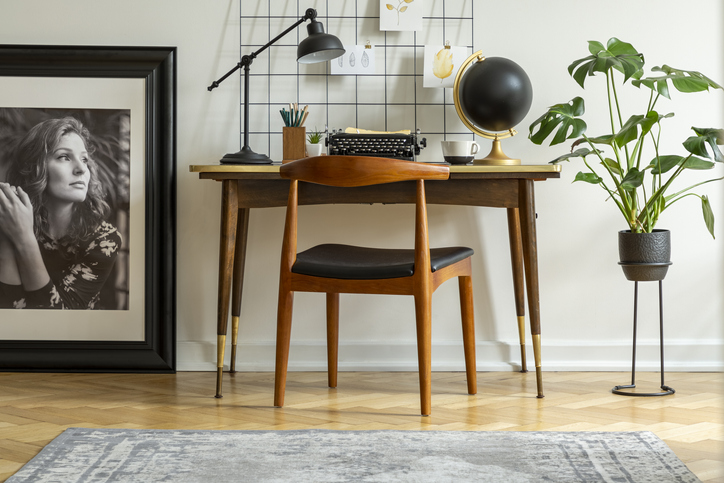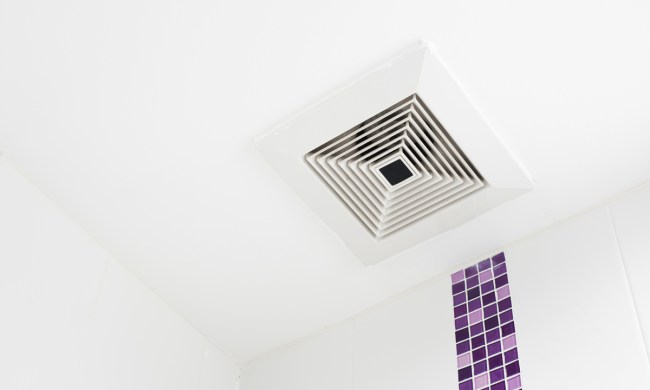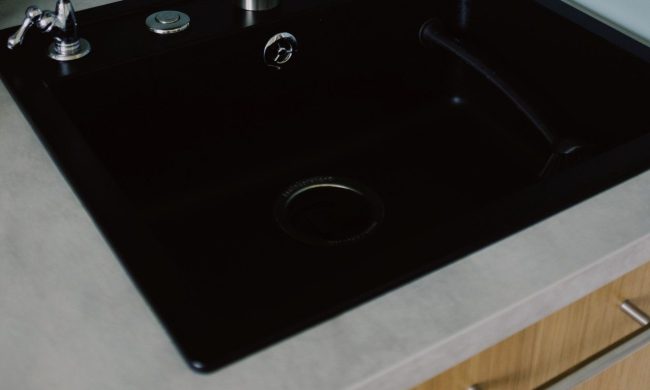
When it comes to working at home, your environment can play a big role in your overall productivity. You want to create a productive workspace. A lot of different factors impact your productivity, including your meals, exercise, and sleep. One thing you may not consider when improving your overall office productivity is feng shui.
Feng shui is the practice of harmonizing yourself with the surrounding environment. It is believed to promote prosperity and good health for those who use this practice in their own home. Since your home office is probably a stressful space much of the time, a little feng shui can go a long way in bringing you peace. This age-old practice may seem complicated or even impossible to master for that home office you’ve modernized, but with some helpful tips, you’ll be on your way to complete zen. Here’s how to feng shui a home office.

What is the feng shui design concept?
The term “feng shui” means “wind and water.” It is about harmonizing and becoming one with your surrounding environment, which is believed to promote focus, productivity, and overall well-being. The roots of feng shui are over 5,000 years old and people all over the world practice this lifestyle. It examines how the energy, or qi, flows through a household and ultimately helps determine the best setup for maximum productivity.
When it comes to designing your home office with feng shui in mind, it may be difficult to know where to start. Luckily, there are a lot of great tips, methods, and rules for creating the perfect feng shui home office so you can be productive, at peace, and calm.
Step 1: Keep your office separate.
A home office is a place of work. When you bring your office into your home, you can oftentimes bring the stress and negativity that may arise from a workday with it. This is why traditionally, offices are typically away from the home. Nowadays, however, working remotely and at home is becoming commonplace. Because of this, it is important to keep your office completely separate from the rest of the home, so you can feel like you fully left work after your day ends. A home office that is tucked away in its own room is the first key step toward achieving that feng shui design concept.
Step 2: Face your desk toward the door.
When you are in your home office, it is important to feel like you are in a place of power. Facing your desk toward the door does just that. By facing your desk at the door, you can see whoever is entering immediately. This is known as the power position, and it shows that you are asserting yourself as the commander of the office. And while this may not seem necessary at home, the whole concept is about mindset.
Step 3: Place your desk far away from the door.
Feng shui practices believe that the doorway to any room is the mouth that brings energy into a room. Because of this, it is best to place your desk away from the direct stream of energy that can be brought into the room at a moment’s notice.

Step 4: Inspire yourself with messages and notes.
By decorating the walls with inspiring posters, messages, and notes, you are giving yourself the opportunity to be motivated, determined, and dedicated. It is important to display messages that speak to you the most. Look for ones that symbolize success and prosperity to help you feel motivated about your current and future endeavors.
You can decorate with pictures, symbols, or mottos that you live by to always keep yourself dedicated to your goals. Real Simple suggests getting a plant or two for your working space, something with a round leaf, specifically.
Step 5: Keep something solid behind you.
Something solid can be a plain wall, a shelf, or a cabinet. Whatever solid object you have behind you will help you feel secure and supported. It is best to avoid having windows behind you because they can make you feel vulnerable and weak when you have your back turned to them. You can also look into buying a chair with a high back. This will help give you the support and comfort you need to work productively.
Step 6: Color matters.
Regarding feng shui, every color has a unique message and meaning. Home offices do best with neutral colors, light grays, soft browns, and pale yellows or oranges. These colors all promote tranquility, calmness, and peace. A home office can be a stressful environment sometimes, and the last thing you need is a bright red wall making you feel more anxious for absolutely no reason.
Choose a calming, neutral color that brings you peace and tranquility, even in your most stressful moments. If you need further inspiration, you can check out our great painting ideas for your home office.
Step 7: Avoid sharp edges.
In terms of fung shui, sharp edges represent a cutting energy and can add pressure and stress to an environment. It is especially important to avoid sharp edges that are pointing at you directly. Whether you’re putting together some rustic decor ideas or sprucing up your Scandinavian-inspired space, look for furniture, wall decor, and other decorations that have soft, rounded edges. This will help keep your office feeling tranquil and less stressful.

Find a wealth corner
Many who want a feng shui office start by finding a wealth corner, which is a place where you will work and earn maximum potential. To do this, stand in the doorway facing toward your office and locate the left corner that is fsrthest from your body. Once you've located it, place an amethyst or citrine crystal here to activate the wealth corner and bring intention and good tidings.
When it comes to creating a feng shui home office, there can be a lot to consider, but don't get overwhelmed. It is important to follow the basic principles of feng shui to achieve a space that will help you feel relaxed, calm, and at peace. Feng shui is known for improving the lifestyle and energy in the lives of many. It can be used in any space in your home that will help you harmonize with your surrounding environment. Use these tips, techniques, and methods to improve the feng shui design in your home office and start enjoying a work environment that is calming and full of zen.



